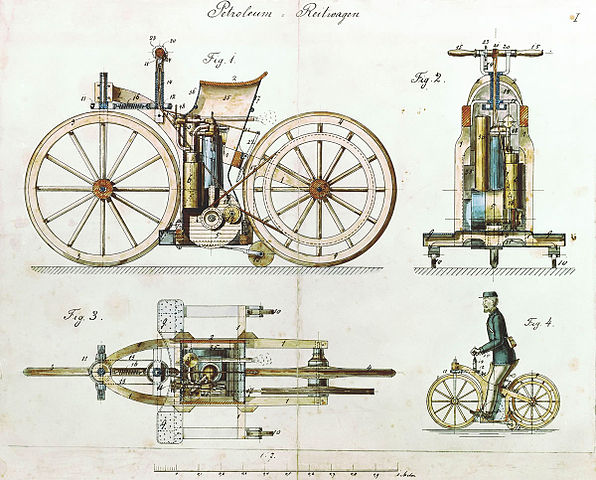
As we’ve talked about before, Mercedes-Benz is a brand famous for firsts. It’s constantly on the cutting edge of innovation, invention, and change, with a legacy of discovering and implementing patents that make the entire car industry safer. Instead of hogging these patents to themselves, many systems, such as the anti-lock braking system, or ABS, were offered up to the industry as a whole to make cars safer for everyone. They offer up these patents to find new ones, still producing products at peak performance and safety. And they’re always on the hunt for new ideas. You may think that Mercedes-Benz is the best, but here’s some proof that the century-old brand definitely was and is at the top of its game.
Benz Patent Motorwagen: The First Gas-Powered Automobile
There were many early versions of the automobile, many of which were unsafe and difficult to use, but Karl Benz was the first to receive a patent (number 37435) in 1886 for his “vehicle powered by a gas engine,” and the car that went into production soon after that bears the closest resemblance to the cars of today. (As an aside, it’s fun to know that Karl Benz’s wife Bertha took the world’s first road trip, going on a 120-mile tour and serving as her own mechanic.)
Patent 854 157: The Crumple Zone
We’ve waxed on about this patent and how it keeps everyone on the road much safer, but it should be stressed again how important crumple zones are. Mercedes-Benz gave away one of their best patents to help drivers. By using a shell-like layer of steel to slow down impacts with Newtonian physics, the zone dissipates the energy away from the passengers, helping to ensure that everyone inside takes as little of the force of the impact as possible.
Anti-Lock Braking System (ABS)
In 1978, Bosch and Mercedes-Benz worked together to offer the public a second-generation braking system that would make the vehicle still steerable even under full braking and prevent locking up, which was and is especially important in foul weather conditions. They took the system from inception in 1970 to the public in 1978 in their S-Class model. Today, it keeps most drivers safe in icy and wintery conditions in many types of vehicles.
Driver-Side Airbag as a Supplemental Restraint System (SRS)
At the Geneva Motor Show in 1981, Daimler was the first to present a driver-side airbag in a series production car. It was an optional feature for the S-Class (W126) and integrated with the seat belt system. This car was also the first to have a seat belt pre-tensioner.
Electronic Stability Control (ESC)
A recommended feature of most modern cars, electronic stability control systems were introduced to the public in the Mercedes-Benz S 600 Coupe with the the help of Bosch. A system that helps to prevent cars from spinning out of a turn or plowing out off the road, ESC offers traction and a way to keep the car on the road.
Emergency Brake Assist
Mercedes-Benz did research in 1992 that showed that the vast majority (more than 90%) of drivers did not press hard enough on the brake in an emergency situation, so they devised a system to help them. In 1996, they introduced their brake assist system with the Mercedes-Benz S-Class, and it became standard for all the company’s models in 1998. They found a problem, and then they solved it: Rarely are things within the car industry that simple.
Autonomous Driving
Autonomous cars and self-driving vehicles seem like recent technology, but Mercedes started experimenting with this back in 1987 in their Eureka Prometheus Project. Later, in 1995, its S-Class drove itself from Munich to Copenhagen. By 2016, the company plans to introduce a hands-free highway driving system.
Pre-Safe® Systems
In 2002, Mercedes offered technology that could help a car detect a collision moments before it happened and adjust itself, anticipating the impact. It closes windows, tightens seat belts, and adjusts head restraints to help the passenger when and if an accident happens.
Attention Assist
Drowsy driving has killed more than 7,000 people in the past decade. In 2009, Mercedes-Benz developed a way to help prevent that with their Attention Assist system. Using multiple types of sensors, including ones that monitor steering behaviors, it detects drowsiness. Then, it issues an audible alarm to wake up the driver and attempts to direct the driver to get coffee and fuel. It’s like having a friend in your car to help keep you awake and safe on a long drive.
